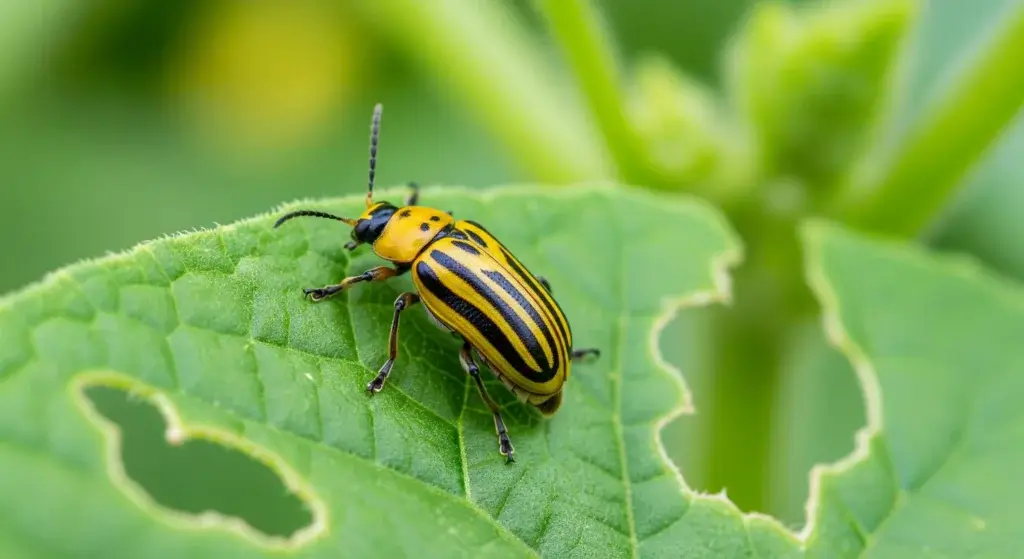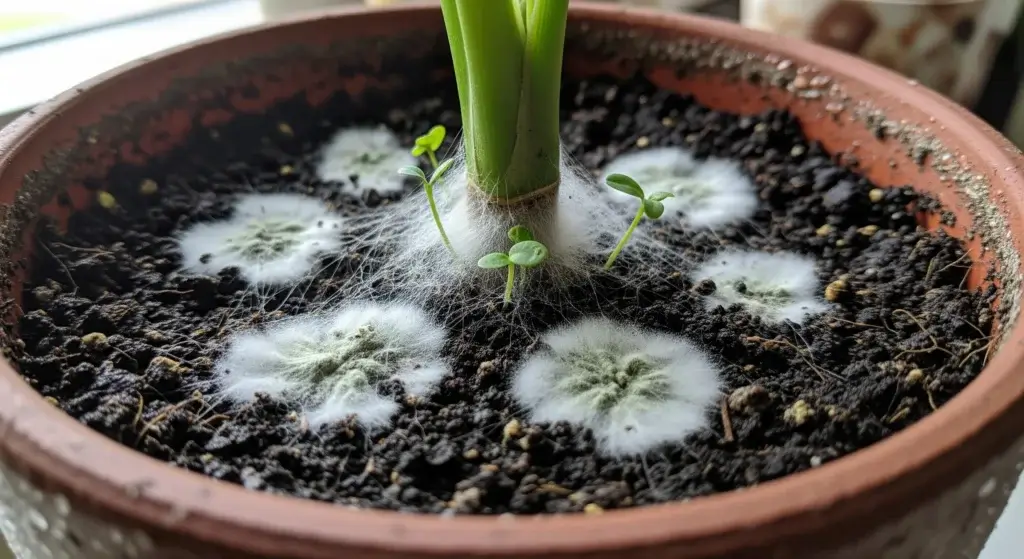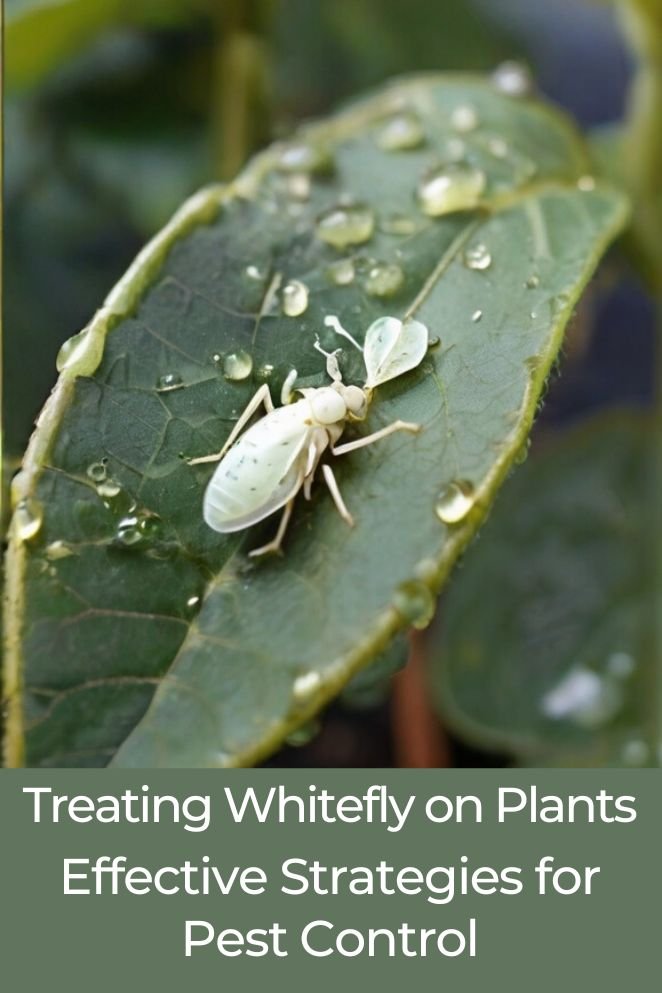
Welcome to our comprehensive guide on dealing with one of the peskiest garden pests – whiteflies.
These tiny insects may seem harmless at first glance, but they can wreak havoc on your plants if left unchecked.
In this article, we’ll explore what whiteflies are, how to identify signs of infestation and strategies for controlling whiteflies on your beloved plants.
What are Whiteflies?
Whiteflies, scientifically known as members of the Aleyrodidae family, are tiny insects that pose a significant threat to plants.
Despite their small size, they can cause considerable damage due to their feeding habits.
- Read also: A Guide to Organic Whitefly Control
- Read also: A Guide to Whitefly Control on Vegetables
Appearance
Whiteflies are minuscule insects, typically measuring between 1 to 3 millimeters in length.
Their coloration can vary, some species may appear yellowish or greenish, depending on factors such as their age and species.
These insects have a distinctive appearance, with powdery wings that are covered in a white, waxy substance.
Behavior
Whiteflies are often found in clusters on the undersides of plant leaves, where they preferentially feed on the sap.
Their choice of habitat serves as a protective measure against predators and harsh environmental conditions.
These pests have a voracious appetite and can rapidly drain the nutrients from plants, leading to stunted growth and reduced crop yields.
Life cycle
Whiteflies reproduce at a rapid rate, with females capable of laying hundreds of eggs during their lifetime.
The eggs are typically laid on the undersides of leaves, where they hatch into nymphs within a few days.
The nymphs undergo several molts before reaching adulthood, during which they continue to feed on plant sap and excrete honeydew—a sugary substance that attracts ants and promotes the growth of sooty mold.
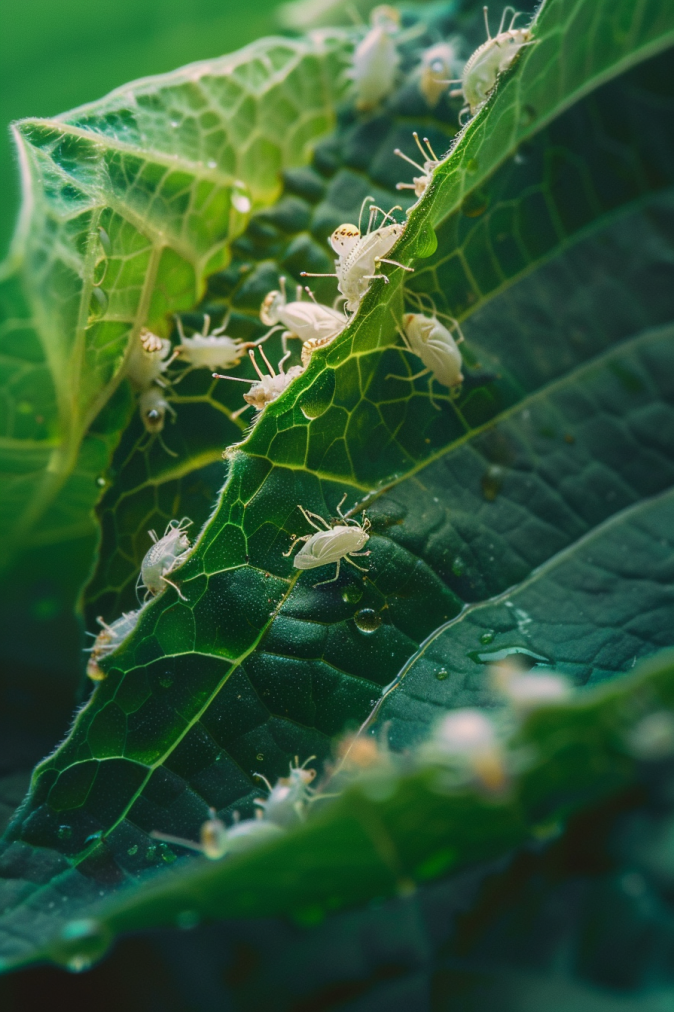
What Are Signs of Whitefly Infestation?
Detecting a whitefly infestation early is crucial for effective control. Here are the signs to watch out for:
Sticky honeydew
Whiteflies excrete a sticky substance known as honeydew while feeding on plant sap.
This honeydew can accumulate on plant surfaces, forming a shiny, sticky layer.
Ants presence
The presence of honeydew attracts ants, which may further exacerbate the problem by protecting whiteflies from natural predators.
Sooty mold
Honeydew provides an ideal medium for the growth of sooty mold, a black fungal growth that can coat leaves and stems, further impacting plant health.
Yellowing leaves
Infested plants often exhibit symptoms of stress, such as yellowing or wilting leaves.
Whiteflies feed on the phloem sap of plants, depriving them of essential nutrients and water.
As a result, affected leaves may turn yellow, wilt, or prematurely drop from the plant.
Defoliation
In severe cases, extensive feeding damage can lead to defoliation and reduced plant vigor, compromising overall plant health and productivity.
Whitefly presence
Whiteflies prefer the sheltered environment provided by the undersides of leaves, where they congregate in clusters.
These tiny insects resemble small, white, or yellow specks and may take flight when disturbed.
Nymphs presence
Whitefly eggs hatch into tiny, flat, yellow, or green nymphs that also hang out on the undersides of leaves.
Look closely for these little guys, as they’re the ones actively feeding on your plant.
Deposits of white wax
Some whitefly species leave behind white waxy deposits on the leaves.
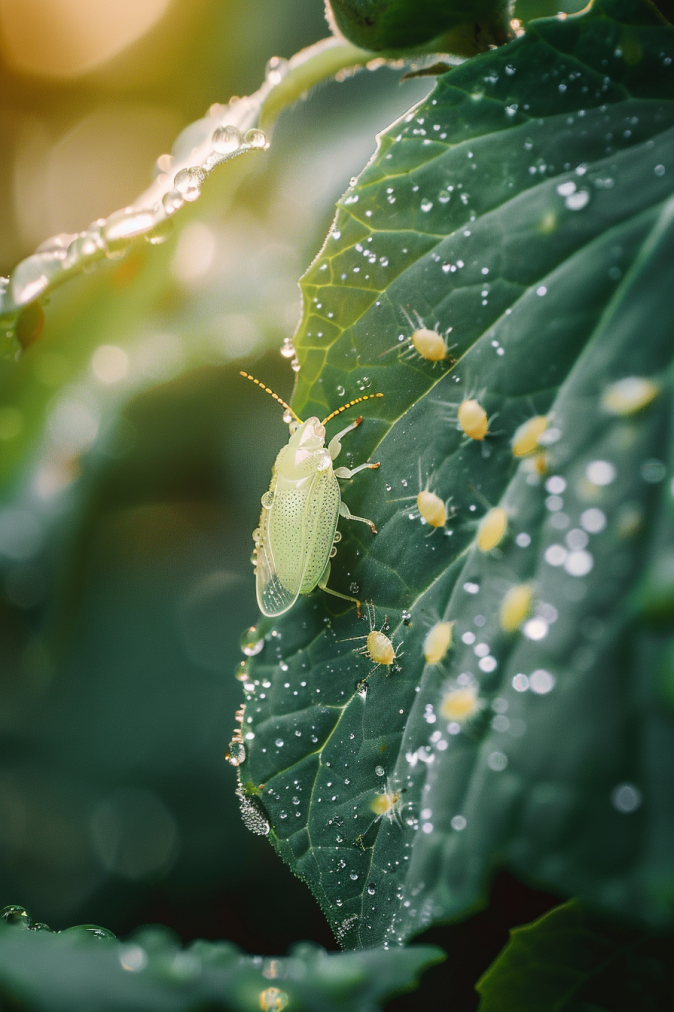
How to Treat Whitefly on Plants
Treating whiteflies on plants requires a multi-faceted approach to effectively manage infestations and minimize damage.
Here’s a comprehensive guide on how to treat whiteflies:
Regular monitoring
Monitor plants regularly for signs of whitefly activity, including sticky honeydew, yellowing leaves, and the presence of adult whiteflies or nymphs.
Take proactive measures to address any resurgence or new infestations promptly to prevent further damage to plants.
Mechanical control
Physically remove
Begin by physically removing whiteflies from infested plants using a gentle stream of water from a garden hose.
Direct the water at the undersides of leaves where whiteflies typically congregate to dislodge them.
If you notice any leaves on your plants that are affected by young whiteflies or their eggs, it’s a good idea to remove them by hand.
This helps stop the infestation from spreading to other parts of the plant.
Pruning
Prune heavily infested leaves or branches and dispose of them properly to reduce the whitefly population and prevent further spread of the infestation.
Isolate infested plants
Place the plants affected by pests in a separate area to avoid them spreading to the healthy ones.
This helps contain the infestation and protect the unaffected plants from whiteflies.
Natural remedies
Insecticidal soap or neem oil
Apply insecticidal soap or neem oil to affected plants.
These natural remedies suffocate and disrupt the life cycle of whiteflies without harming beneficial insects or the environment.
Dilute the insecticidal soap or neem oil according to the manufacturer’s instructions and spray it evenly on the foliage, paying special attention to the undersides of leaves where whiteflies are present.
Repeat the application every 7-10 days or as directed until the infestation is under control.
Sticky traps
Place yellow sticky traps near your plants to attract and trap adult whiteflies.
This can help reduce their population but won’t eliminate the entire infestation.
Biological control
Introduce natural predators of whiteflies into the garden to help suppress their populations.
Ladybugs, lacewings, parasitic wasps, and predatory mites are effective predators that feed on whiteflies at various life stages.
Purchase beneficial insects from reputable suppliers and release them in the infested area according to the recommended guidelines.
Provide suitable habitat and food sources for beneficial insects to encourage their establishment and long-term presence in the garden.
Cultural practices
Unfavorable conditions for whiteflies
Implement cultural practices that create unfavorable conditions for whiteflies.
These include proper plant spacing, adequate airflow, and reducing excessive nitrogen fertilization, which can stimulate whitefly populations.
Clean up debris
Keep your garden free of weeds and debris to get rid of potential hiding spots and alternate host plants for whiteflies and their eggs. This helps prevent infestations and keeps your garden healthy.
Chemical control
If natural and mechanical control methods are ineffective or impractical, consider using chemical insecticides as a last resort.
Choose insecticides labeled for whitefly control and follow the instructions carefully to minimize risks to humans, pets, and the environment.
Apply insecticides during the early morning or late afternoon when whiteflies are most active and follow any safety precautions recommended on the product label.
Rotate between different classes of insecticides to prevent the development of resistance in whitefly populations.

- Read also: How To Make a Natural Pesticide
- Read also: Whitefly vs. Aphid – Know the Difference
Conclusion
Dealing with whiteflies can be challenging, but with the right strategies, you can protect your plants and keep these troublesome pests at bay.
By staying vigilant, and practicing effective control methods, you can maintain a thriving garden free from whitefly infestations.
FAQs
While whiteflies primarily pose a threat to plants, they can indirectly impact humans by reducing crop yields and causing economic losses for farmers.
While complete eradication of whiteflies may be difficult, it is possible to manage their populations effectively through a combination of preventive measures and control tactics.
Chemical pesticides should be used as a last resort due to their potentially harmful effects on beneficial insects and the environment. Whenever possible, opt for natural or organic alternatives to minimize risks.


